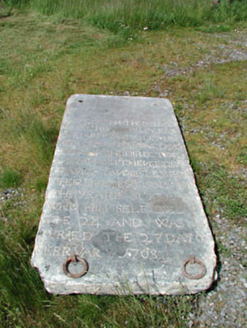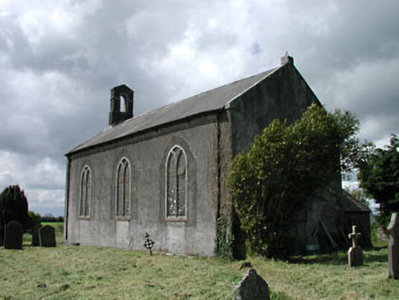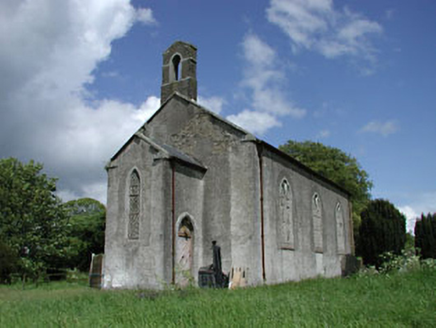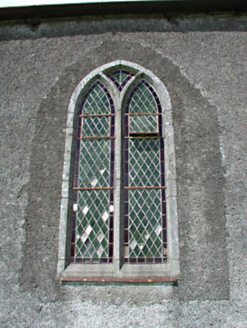Survey Data
Reg No
11902811
Rating
Regional
Categories of Special Interest
Archaeological, Architectural, Artistic, Historical, Social
Original Use
Church/chapel
Date
1795 - 1800
Coordinates
278689, 204585
Date Recorded
23/10/2002
Date Updated
--/--/--
Description
Detached three-bay double-height Gothic-style Board of First Fruits Church of Ireland church, built 1796, built on site of earlier medieval church with pointed-arch openings, single-bay single-storey rubble stone vestry projection to north-east, single-bay double-height gabled projecting lower porch to west and bellcote to gable to west. Now disused. Gable-ended roofs with slate (hipped to vestry projection). Clay ridge tiles. Cut-stone coping to gables. Roughcast bellcote to gable to west (bell now missing). Cast-iron rainwater goods. Roughcast walls. Unpainted. Rubble stone walls to vestry projection. Cut-stone quoins. Pointed-arch window openings (some blind to south). Stone sills. Diamond-leaded fixed-pane traceried stained glass windows. Pointed-arch door opening. Rendered surrounds. Tongue-and-groove timber panelled door. Overpanel. Ogee-headed opening inserted to south, c.1980. Rendered surround. Iron roller shutter. Set back from road in own part-overgrown grounds on site on earlier Medieval church with tumulus.
Appraisal
Saint James's Church is a compact Board of First Fruits-funded church on a simple plan and without the addition of a later entrance tower that is common to many Church of Ireland churches. Designed in a reserved Gothic style the elevations are simple in execution and are enlivened by evenly distributed window openings of graceful proportions. The church is built on the site of an earlier medieval church and therefore continues a longstanding ecclesiastical presence in the locality. Although now disused, the church is relatively well maintained and retains much of its original character, features and materials, including fenestration and a slate roof. Attractively set in its own enclosed grounds and slightly elevated as a prominent landmark, the church is surrounded by a picturesque graveyard that contains many cut-stone grave markers of artistic merit. The church is of considerable social and historic significance, attesting to the once prosperous Church of Ireland community in the locality.







